The buzz of expectation from the journalists waiting to enter the press preview, surrounded by the hectic preparations for the formal private view, and observed by a black helicopter circling overhead, created an electric atmosphere of anticipation. My photographer entered first, and I was left imagining the work he would be seeing and the artworks and rooms he would choose to photograph, trusting that they would coincide with my own observations.

Telepathy to connect visually with my colleague would have been useful, but the separation heightened a sense of suspense. As i waited patiently in the courtyard overlooked by the ancestral masters of art carved in stone, I hoped that what awaited me in the exhibition lived up to my expectations, and that in recognition of the continuity of the history of art, that I would find artworks to feel passionately enough about to wish to share. I am pleased to say that I was not disappointed.

It was enlightening to be guided around the exhibition by the co-ordinator of the exhibition Hughie O´Donoghue RA, who explained the concepts behind the visual positioning of the artworks. In trying to put some shape on the exhibition, he envisaged expressing painting in its elemental state as colour, form and material and he described how he hung a painting by Anslem Kiefer Hon RA first, as central to the construction of the space. He explained the associations in the work entitled Kranke Kunst, as a heavy evocation of the fields of northern France and a direct reference to this year being the centenary of the start of the First World War. The impressive work of Hughie O´Donoghue RA entitledThe Quadrilateral is shown behind the photograph of the artist in the above photograph, and is exhibited almost next to Keifer and parallels the same concept in that it also refers to a place in northern France.
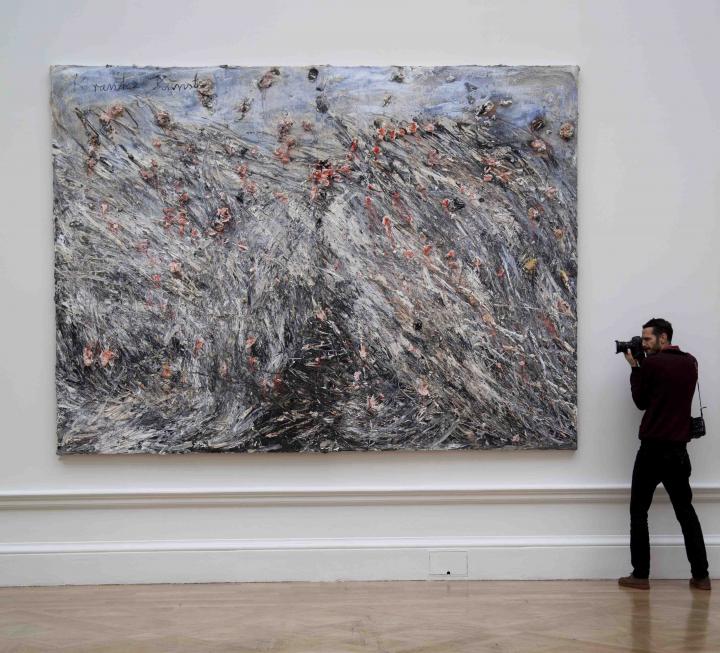
Directly opposite Keifer he positioned a work by Georg Baselitz Hon RA entitled In London schritt für schritt.
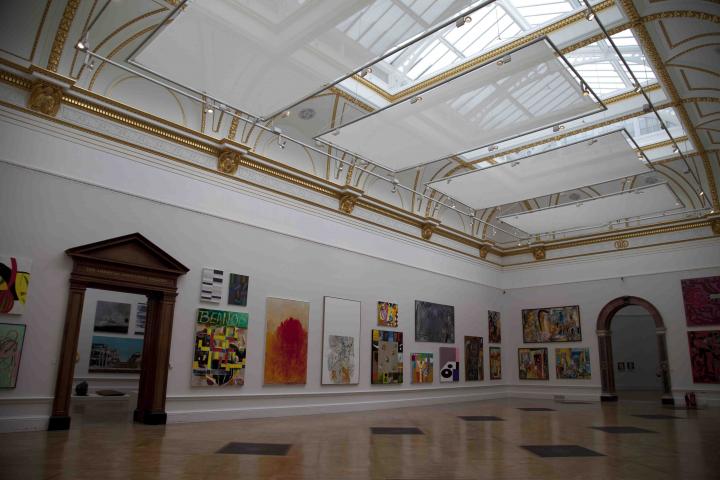
Diagonally to them both on the adjacent wall he hung a large monochrome Sean Scully RA entitled Doric Night, and described the three as cardinal anchor points around which the other artworks were hung. His intention was to bring the works together so that they could work together, allowing the paintings to be given space. Enabling the visitor to look into the works rather than at them. This is most apparent in the artwork of Keifer, in which the extremely textured layering of paint markedly contrasts with the printed photographic underprinting of dry grass, which can be glimpsed if one ventures close enough.
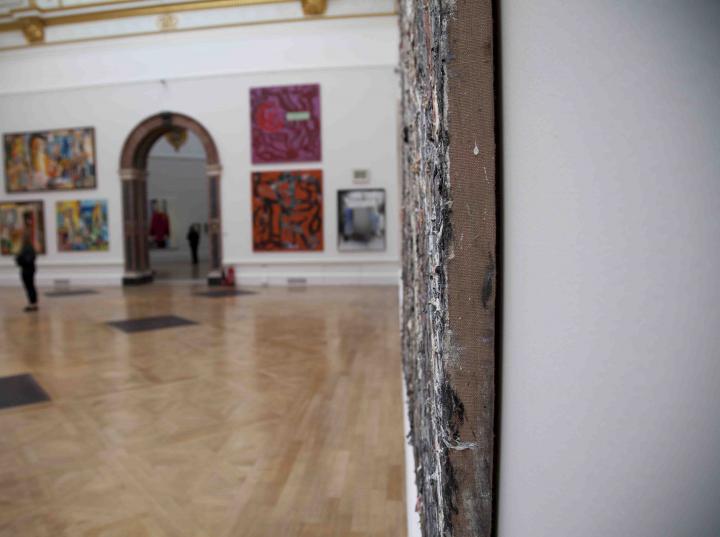
The artist Cornelia Parker RA was invited to curate a pivotal room in the exhibition. She is best known for her work entitled Cold Dark Matter: An exploded View (1991) in which she exploded a shed and reconstructed the fragments as if suspending a moment of the event in time, with strong lights casting impressive shadows around the space. In contemplating how to curate the exhibition she decided to limit the artwork to black and white as a direct contrast to the riot of colour normally associated with the summer exhibition, and to invite artists who wouldn't normally exhibit at the summer exhibition. In this photograph she is to the far right of the photograph infront of an artwork by a work entitled Work No. 3988: ´Assholes´, by Martin Creed.
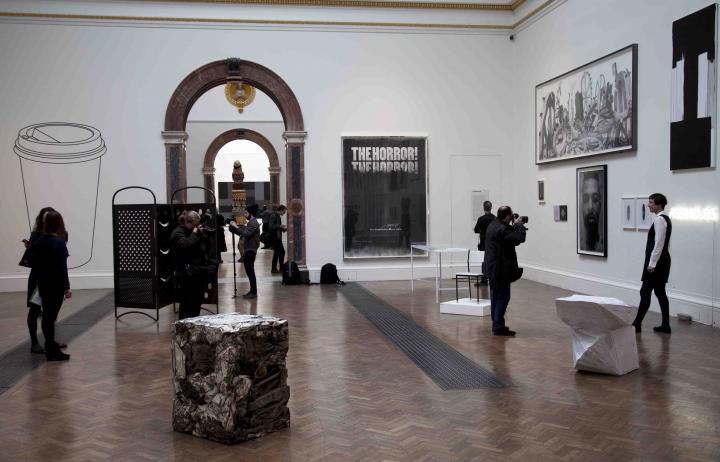
Therefore she sent many letters of request to artists and was so surprised with the quantity of positive responses that she required a larger room in which to exhibit than had initially been proposed. I was so lucky to see the artist in the room itself, walking around and posing in front of her favourite works.

In the whole exhibition, a work by Wolfgang Tillmans RA entitled Greifbar 1 was the first to go up, and was chosen to be a powerful finale, to visually signify the end of Corneilia Parkers black and white room. It is most definitely my favourite work in the exhibition, as the technical attention to detail and the raw energy of its creation is inspirational.
This year the RA introduced digital submissions, which significantly increased the representation of contemporary international artists.This exhibition has an inspirational collection of over 1,200 contemporary artworks which significantly rivals International Art Fairs for its intensity, diversity, and pure quality. The costs of the works are extraordinary and within one room alone, hundreds of thousands of pounds could be spent acquiring works. It is primarily a pleasure to visit and the emphasis is not to purchase but to appreciate. Therefore what differentiates it from a visit to a museum, is that it is essentially a truly contemporary exhibition financially supporting living artists.
Final thoughts: the RA summer exhibition is an unmissable show!
Written by Natasha Hall www.natasha-hall.com
The photographer Abraham Calero www.abrahamcalero.com was so inspired by the visual information overload of the exhibition, that he created this photograph within the gallery:
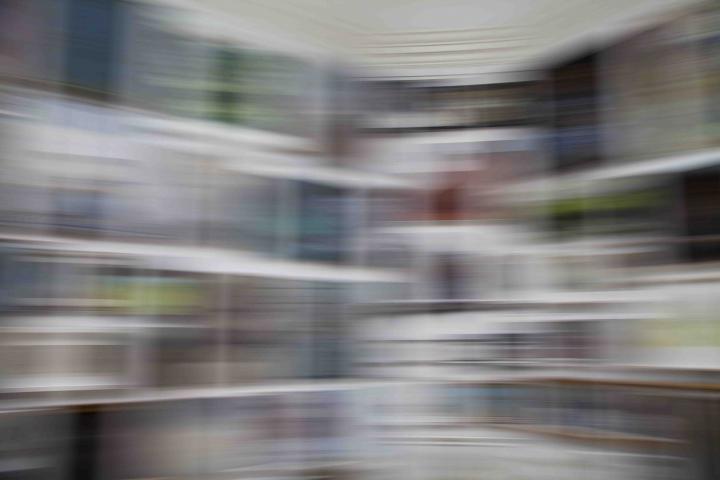
Summer Exhibition 2014
9 June - 17 August 2014
Events
Exhibition tours: Fridays 13th June -1 5th August, 7pm
Free with an exhibition ticket.
Summer exhibition edits: Thursdays 19th June - 3rd July, 3-3.30pm
Free with an exhibition ticket, just meet in the central hall and no booking required.
Spotlight talks on an individual artwork: Thursdays, 3pm
Free with an exhibition ticket.
Summer exhibition family gallery tours: Sundays in July, 2.30pm
Free with an exhibition ticket.